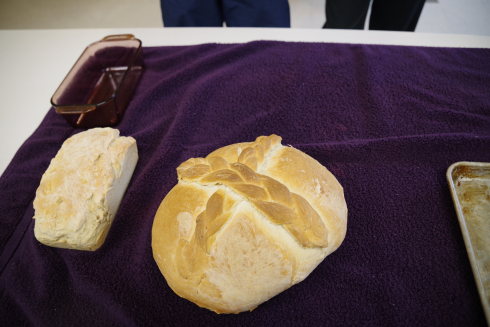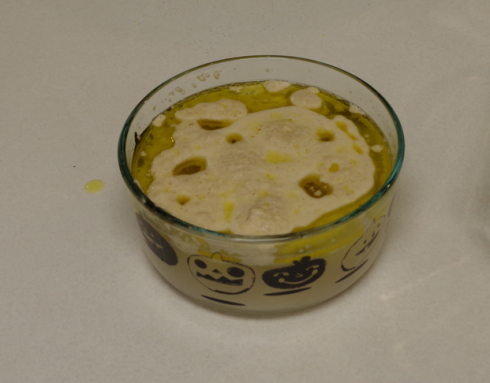
Nice and fluffy loaves of bread requires the generation of bubbles in the dough. This is typically done either with an acid-base reaction (baking soda and an acid) or with yeast. Since we’re doing biology, we made some loaves and focused on how the process of bread making require careful management of the environment for the yeast to produce the carbon dioxide gas that makes the bubbles that makes the bread rise.
We followed the bread-baking recipe I’ve used before for the middle school’s student-run business, but had to shorten rising times to get it all done by the end of our class.
Yeast is a single-celled fungi (typically Saccharomyces cerevisiae). Fungi are heterotrophs, so focusing on what the yeast requires for life and metabolic activity requires consideration of:
- water (moisture)
- warmth (but not too warm)
- energy source (short chained carbohydrates to make the energy more easily accessible)
Yeast produces carbon dioxide bubbles via fermentation (Styurf et al., 2017). It could do it through respiration, but in the bread dough there is not a lot of oxygen available (more info on respiration here).
Fermentation looks something like:
C6H12O6 → 2 C2H5OH + 2 CO2
So, the carbohydrate (glucose) is converted to ethanol and carbon dioxide.
As opposed to respiration (which requires oxygen):
C6H12O6 + 6 O2 → 6 H2O + 6 CO2
